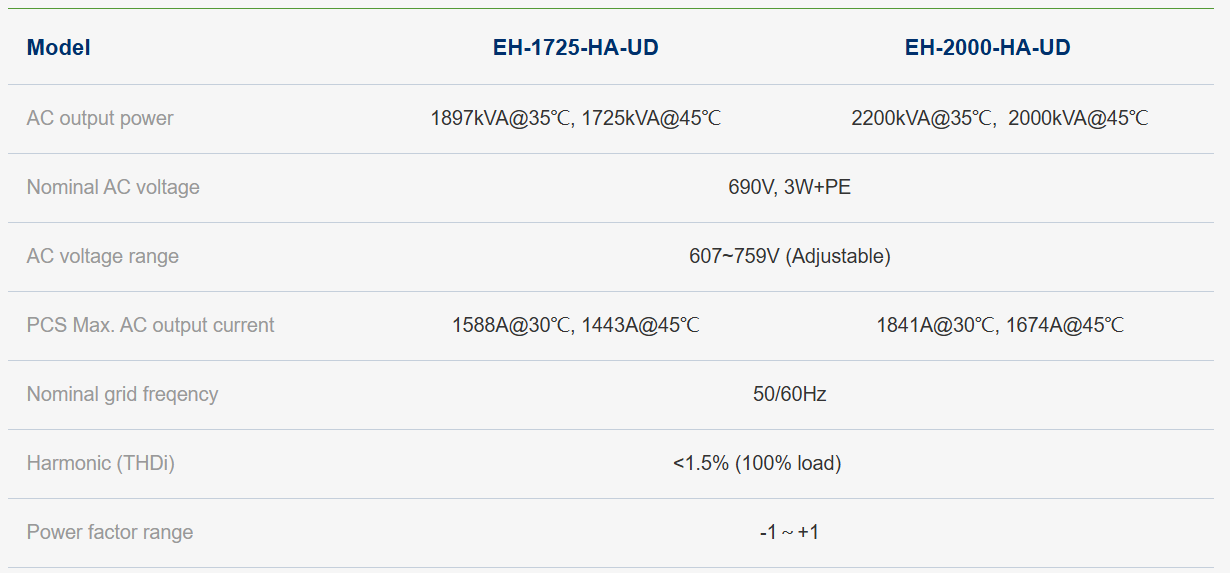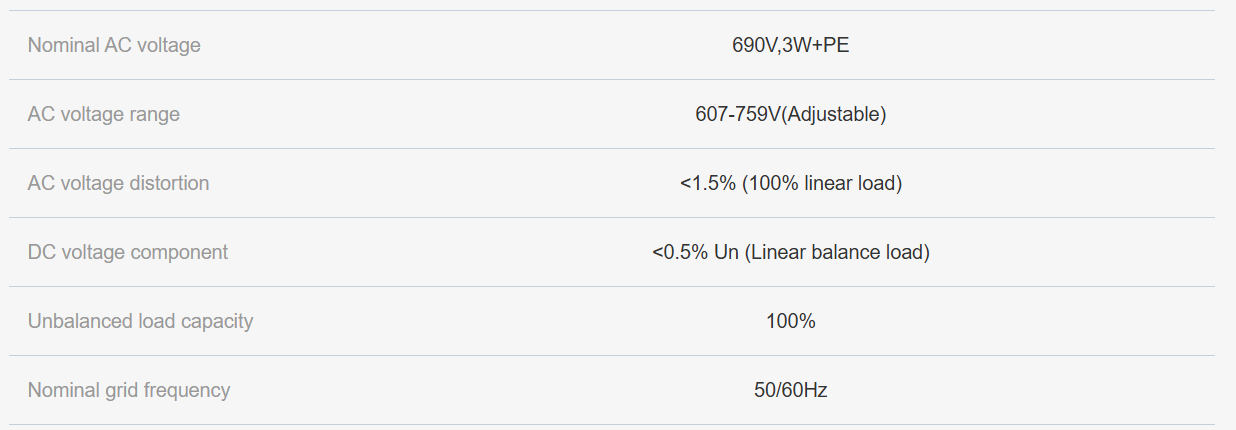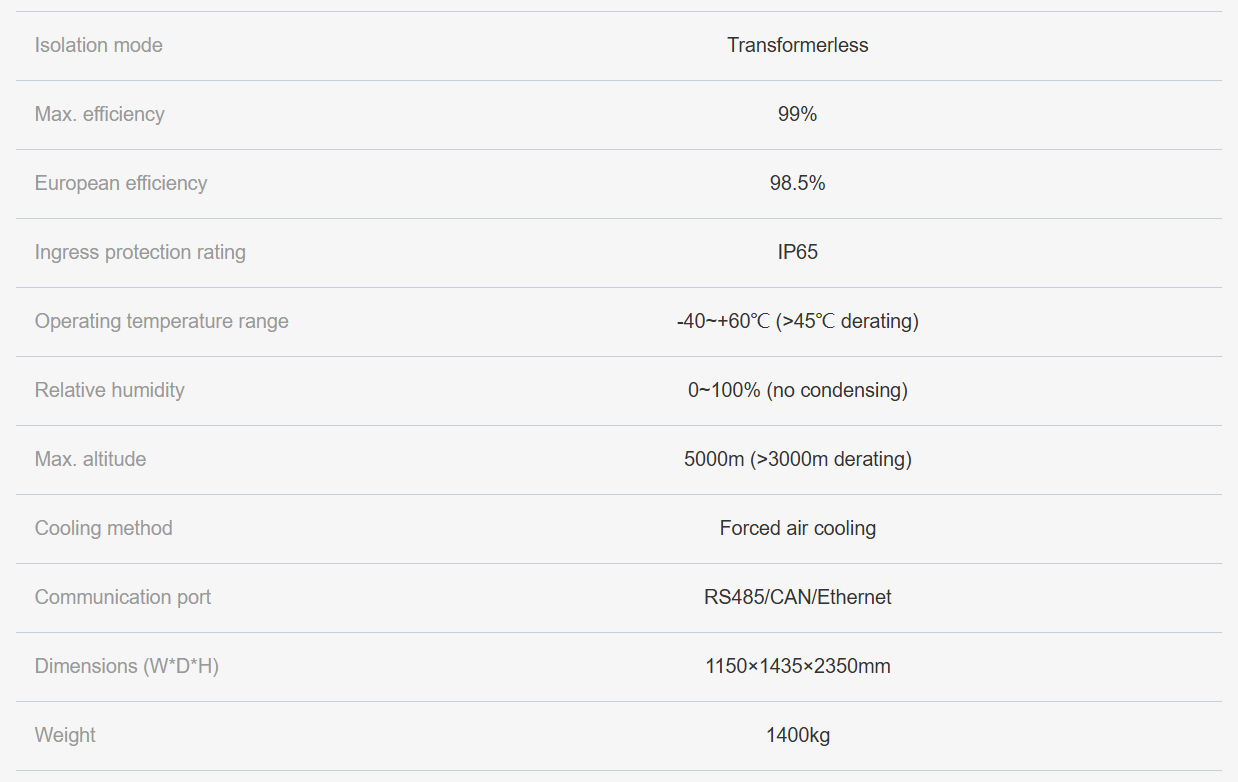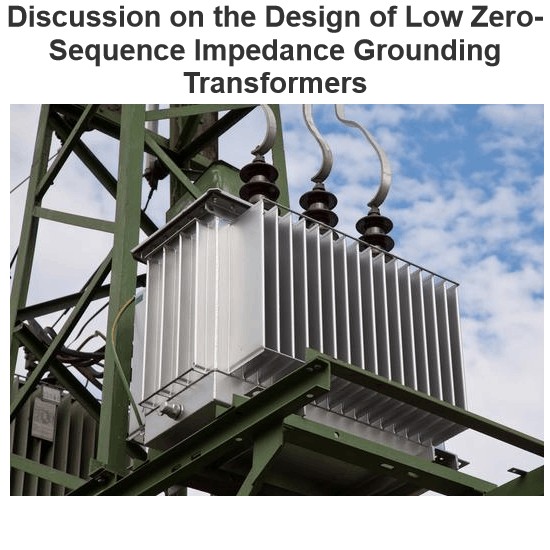| Brand | Wone |
| Model NO. | 1725 KVA Power Conversion System (Central PCS) |
| Max.Efficiency | 99% |
| AC output power | 1725kVA |
| Max. DC voltage | 1500V |
| Max. DC current | 1936A |
| Max. AC output current | 1046A |
| Series | Power Conversion System |
Features
Max. efficiency up to 99%.
Full reactive power four-quadrant capability.
IP65 protection degree.
Black start ability.
Support VSG function.
Millisecond-level Power response to EMS/SCADA.
Three level topology.
Use alone or in combination with MV station.
DC Parameters:

AC parameters (On-Grid):

AC parameters (Off-Grid):

General data:

How the energy storage converter is short-circuit protected?
Current Detection
Function: Monitor the input and output currents of the converter in real time.
Principle: Use current sensors (such as Hall effect sensors, shunts, etc.) to detect the current. When a sudden increase in the current is detected and it exceeds the preset threshold, the system will determine that a short circuit may have occurred.
Overcurrent Protection
Function: Quickly cut off the power supply when an overcurrent is detected to prevent the short circuit from developing further.
Principle:Hardware Protection: Use hardware devices such as fast fuses, circuit breakers, or MOSFETs (Metal Oxide Semiconductor Field Effect Transistors) to cut off the current.
Software Protection: Execute the protection logic through a microprocessor or controller to control relays or MOSFETs to cut off the current.
Protection Measures
Cutting off the Power Supply: Cut off the power supply through relays or MOSFETs to prevent the short-circuit current from continuing to flow.
Alarm Notification: Issue an alarm through the display screen or indicator lights to remind the user that there is a short-circuit fault in the system.
Fault Isolation: When a short circuit is detected, isolate the faulty part to prevent the fault from spreading to other parts.






